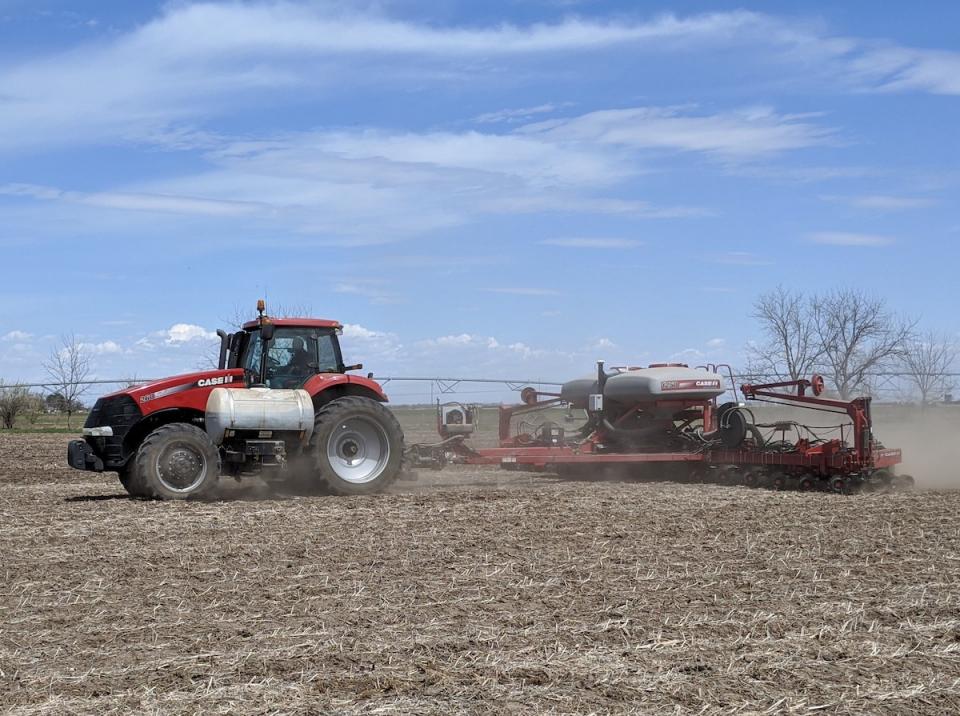
Corn and Soybean Planting Considerations for 2020
Warmer temperatures and great soil conditions in portions of the state allowed the planting season to begin this week. Everything we do at planting sets the stage for the rest of the year. With tight economics, it’s important to make wise decisions with the factors we can control during planting season. The following research-based tips are updated from this 2019 CropWatch article for consideration.
Proper Soil Conditions
- Compaction can occur from driving on or tilling in wet soils, creating clods and hard pans. Sidewall compaction can occur when injecting fertilizer or planting seed into wet soils when it’s being “mudded in.”
- Plant into soil temps as close to 50°F as possible. Check weather conditions for the next 48 hours and avoid saturated soil conditions. If planting a few degrees less than 50°F, make sure to check with seed dealers on more cold-tolerant seed, and only plant if the forecast is calling for warm temperatures the next few days that would also help increase the soil temperature. Once planted, corn seeds need a 48-hour window and soybean seeds need at least a 24-hour window when the soil temperature at planting depth does not drop much below 50°F and no cold rains are anticipated.
Proper Planting Window versus Calendar Date
- Weather conditions vary from year to year, thus calendar dates aren’t as important as planting windows for optimum corn yield in Nebraska. Not every year will the optimum planting date for corn be in April. This has also been found throughout the Corn Belt. In 2019, some growers commented late May/early June planted corn was some of their best yielding due to the strange weather conditions.
- Planting soybean early is critical to maximizing yield. This has been found through numerous University studies in addition to grower-reported data. Because of this, an increasing number of growers are planting soybean earlier than or at least at the same time as planting corn. Use a fungicide + insecticide seed treatment when planting in late April/early May. UNL doesn’t have early-planted soybean research relative to a cost-benefit analysis of these treatments. CropWatch has additional information on considerations for early soybean planting.
Proper Planting Depth
Aim to get corn and soybean in the ground 1.5-2 inches deep. This keeps corn and soybean seed in even soil temperature and moisture conditions. In spite of monitors showing down force and seeding depth, it’s still important to get out and check seeding depth across the planter in each field.
- For corn, proper depth is critical for root establishment and avoiding rootless corn syndrome where the nodal (crown roots) don’t get well established. Thus, avoid planting shallow into wet soils.
- While soybean is more forgiving on planting depth, UNL research found lowest yields when soybean was planted 1.25 inches deep or less or 2.25 inches or greater with the highest yield at 1.75 inches deep.
Seeding Rates
- In general, our research has shown a trend of yield increases with increasing corn populations; however, it is very hybrid dependent. We’d recommend working with your seed dealer or testing different seeding rates via on-farm research.
- In soybean, numerous studies have shown seeding rates can be reduced without significantly affecting yields. This has been found for both 15-inch and 30-inch planted rows in medium- to fine-textured soils in eastern and western Nebraska. The farmers in the Nebraska studies planted seed with at least 90% germination listed on the seed tag. Our recommendation based on the research is to plant 120,000 seeds/acre and aim for a final plant stand of 100,000 plants/acre. Reducing rates from 150K to 120K can save a grower $10/acre depending on seed costs.
Final Thoughts
Planting does set the stage for the remainder of the year! Agronomically and economically it’s important to do this right the first time.
If you’re interested in testing any of these considerations for yourself, a number of on-farm research protocols are available for various production practices or products. You can view them online or contact your local Extension cropping system’s educator.
References in CropWatch
Elmore, Roger, Jim Specht, Jenny Rees, Haishun Yang, Patricio Grassini. April 2018. Cold Soil Temperature and Corn Planting Windows
Jasa, Paul. April 2019. Wait For Better Conditions Before Heading Out On Wet Soils
Mueller, Nathan, Jenny Rees, and Laura Thompson. April 16, 2020. Soybean Seeding Rate On-Farm Research. University of Nebraska Extension CropWatch.
Rees, Jennifer and Robert Klein. April 2010. Proper Corn Planting Depth Critical to Successful Season
Rees, Jenny, Laura Thompson, Strahinja Stepanovic, Joe Luck, and Nathan Mueller. April 18. Soybean Seeding Rates
Rees, Jenny and Jim Specht. April 9, 2020. Understanding the Soybean Germination Process for Early Planted Soybean Decisions. University of Nebraska Extension CropWatch.
Specht, Jim, Jenny Rees, Keith Glewen, and Patricio Grassini. April 2014. Soybean Planting Depth: Consider Planting Deeper
Specht, Jim, Jenny Rees, Patricio Grassini, and Nathan Mueller. April 2015. Soybean Planting Tips for Optimal Yield 2015
Specht, Jim, Jenny Rees, Patricio Grassini, and Keith Glewen. April 2016. Three Key Considerations for Planting Corn and Soybeans
Specht, Jim, Greg Kruger, Jenny Rees, Roger Elmore, Patricio Grassini, Keith Glewen, and Tom Hoegemeyer. April 2017. Corn, Soybean Planting Considerations for this Week’s Cold Snap
Specht, James, Patricio Grassini, Jenny Rees, Nathan Mueller, Roger Elmore, and Juan Ignacio Rattalino Edreira. April 2018. Amplifying Positive Impacts of Early Soybean Planting
Thompson, Laura, Jenny Rees, Charles Wortmann, Keith Glewen, and Gary Zoubek. April 2015. Nebraska On-Farm Research Corn Seeding Rate Studies 2010-2014
Online Master of Science in Agronomy
With a focus on industry applications and research, the online program is designed with maximum flexibility for today's working professionals.
